Distraction seems like a strange thing to price, but if you consider it in the context of decision making, it definitely has a price – if the decision maker is distracted, it will take them more effort to reach their goal. A simple simulation can be done to show just how much distraction may cost relative to a case when the agent’s attention is directed to the goal.
This text is part of the series on decision governance. Decision Governance is concerned with how to improve the quality of decisions by changing the context, process, data, and tools (including AI) used to make decisions. Understanding decision governance empowers decision makers and decision stakeholders to improve how they make decisions with others. Start with “What is Decision Governance?” and find all texts on decision governance here.
Let’s say we have an agent who moves through a grid from a starting position to a goal position. The agent does not know the goal position.
We then put in place decision governance that at every step directs the agent’s attention to the goal position. If that governance is absent, the agent is distracted and is choosing randomly its next steps. In addition, and simply to avoid very large numbers of steps that the agent could take, there will in both cases be decision governance that ensures the agent avoids revisiting positions, unless there is no other choice.
The price of distraction is the difference between the number of steps the agent will take on average to reach the goal, in each of the two cases: when the agent’s attention is directed to the goal position, and when it isn’t.
Two sets of simulation runs are executed, each of 30 runs. The grid that the agent moves through has 30 x 30, or 900 positions. The starting position is in the upper left corner, the goal in the lower right corner of the grid.
The histogram below shows the case when the agent is distracted. On average, it took about 2100 steps to reach the goal, with a standard deviation of about 1660 steps.
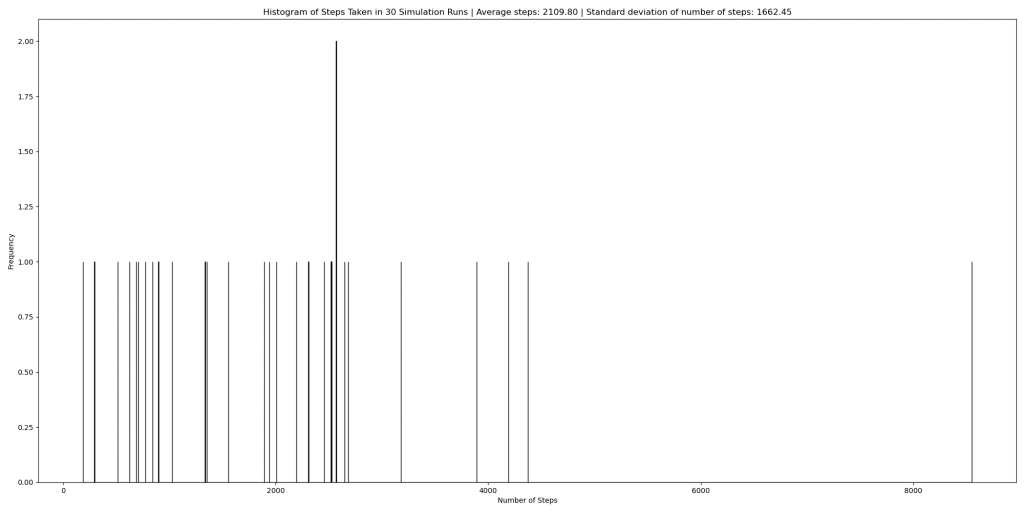
The following shows the paths taken when the agent is distracted. What you cannot see below is that the agent revisited some of the positions.
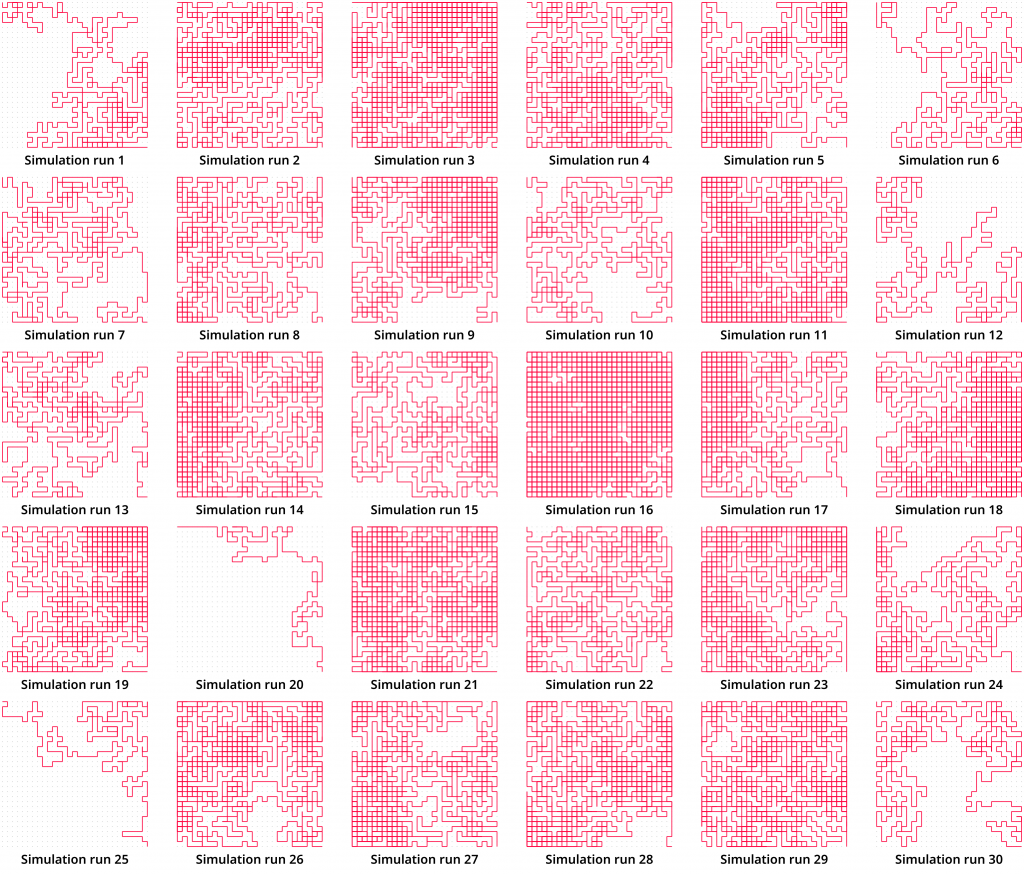
If the agent is not distracted, that is, its attention is directed through decision governance to the goal, the histogram over 30 simulation runs is quite different. It is shown below. The agent took on average about 100 steps with a standard deviation of about 25 steps. 21 times fewer steps on average than when distracted in the way I defined distraction above.
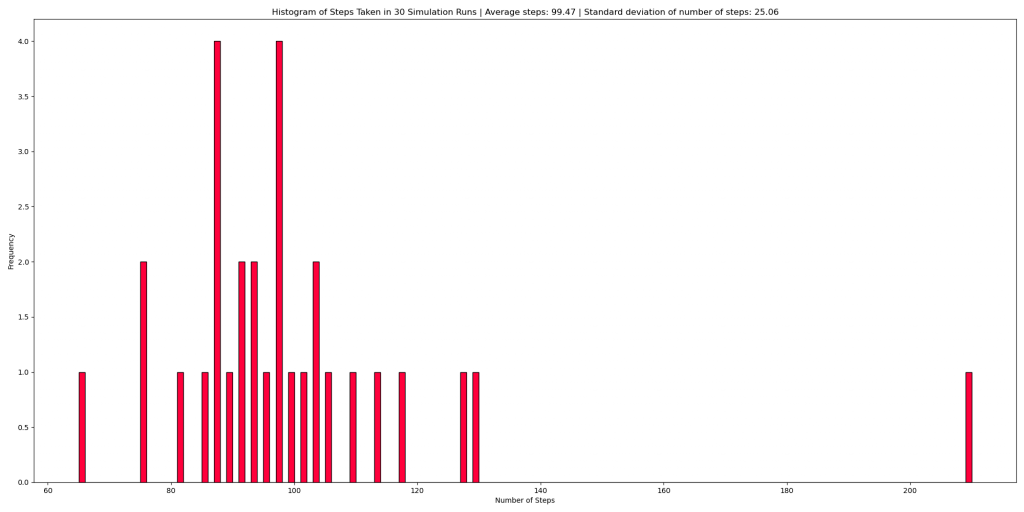
The runs expectedly show simpler paths.
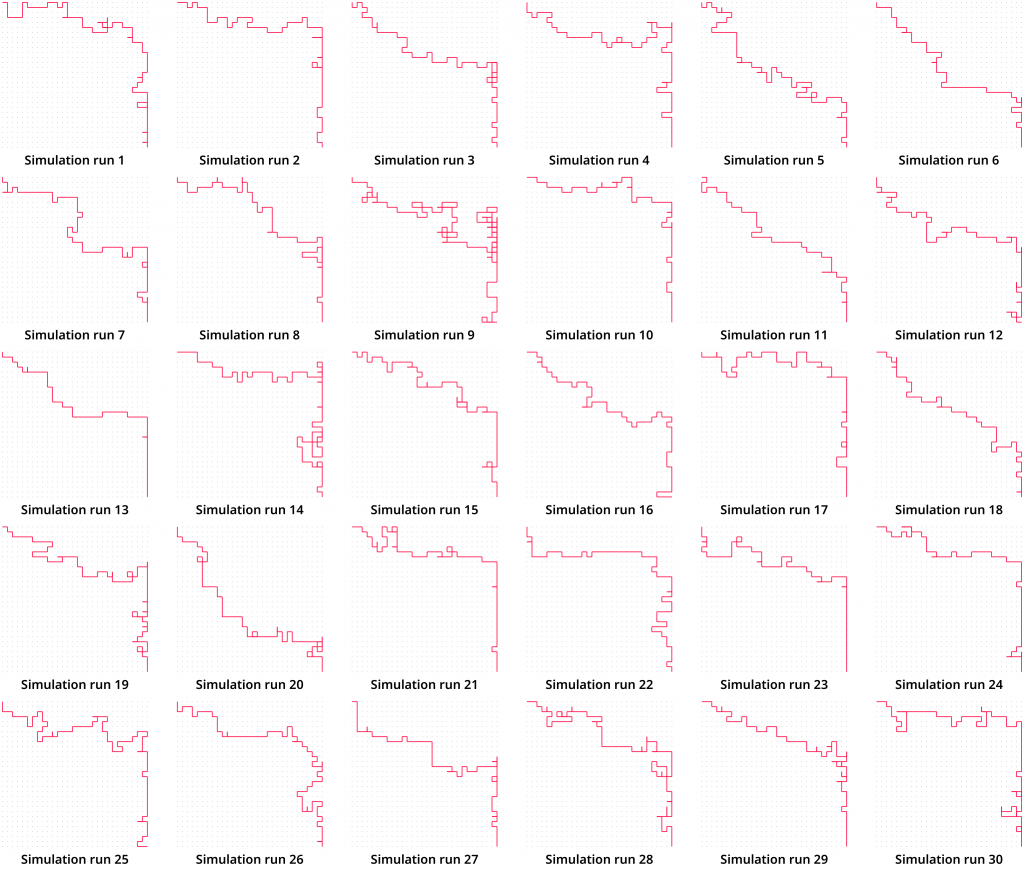
Distraction can be worse – we can distract the agent not by having it randomly choose the next step, but by directing its attention away from the goal. The impact is simple to anticipate – the number of steps will increase further.
Using the decision governance design space terminology from the text here, the parameters governed in the simulations above are Attention and Memory, across all stages of the decision process. This is shown in the image below.
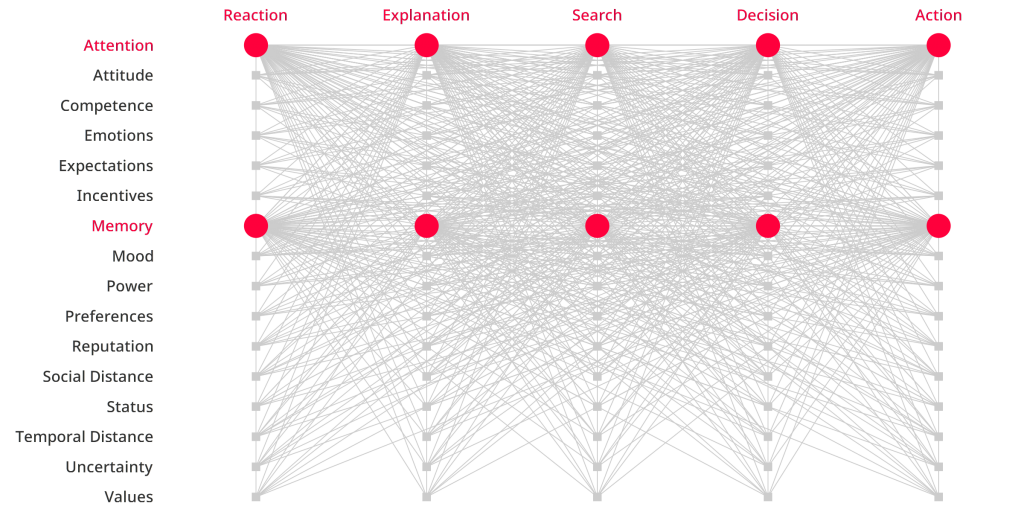
Having more runs in the simulations does not change the observations above. The histogram below is for 1,000 runs of the distracted agent.
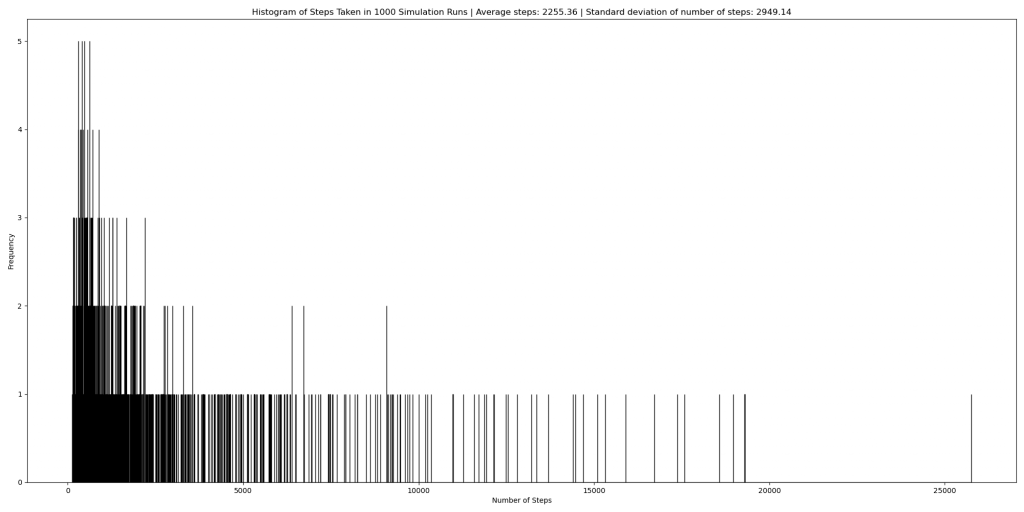
The following histogram shows steps across 1,000 runs for the agent whose attention is directed to the goal at each step.
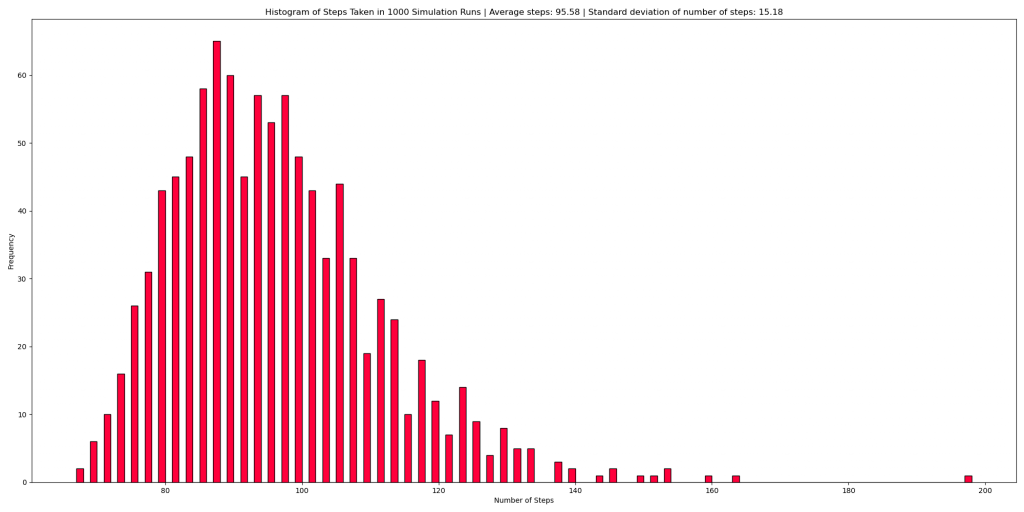
Decision Governance
This text is part of the series on the design of decision governance. Other texts on the same topic are linked below. This list expands as I add more texts on decision governance.
- Introduction to Decision Governance
- Stakeholders of Decision Governance
- Foundations of Decision Governance
- How to Spot Decisions in the Wild?
- When Is It Useful to Reify Decisions?
- Decision Governance Is Interdisciplinary
- Individual Decision-Making: Common Models in Economics
- Group Decision-Making: Common Models in Economics
- Individual Decision-Making: Common Models in Psychology
- Group Decision-Making: Common Models in Organizational Theory
- Role of Explanations in the Design of Decision Governance
- Design of Decision Governance
- Design Parameters of Decision Governance
- Factors influencing how an individual selects and processes information in a decision situation, including which information the individual seeks and selects to use:
- Psychological factors, which are determined by the individual, including their reaction to other factors:
- Attention:
- Memory:
- Mood:
- Emotions:
- Commitment:
- Temporal Distance:
- Social Distance:
- Expectations
- Uncertainty
- Attitude:
- Values:
- Goals:
- Preferences:
- Competence
- Social factors, which are determined by relationships with others:
- Impressions of Others:
- Reputation:
- Promises:
- Social Hierarchies:
- Social Hierarchies: Why They Matter for Decision Governance
- Social Hierarchies: Benefits and Limitations in Decision Processes
- Social Hierarchies: How They Form and Change
- Power: Influence on Decision Making and Its Risks
- Power: Relationship to Psychological Factors in Decision Making
- Power: Sources of Legitimacy and Implications for Decision Authority
- Power: Stability and Destabilization of Legitimacy
- Power: What If High Decision Authority Is Combined With Low Power
- Power: How Can Low Power Decision Makers Be Credible?
- Social Learning:
- Psychological factors, which are determined by the individual, including their reaction to other factors:
- Factors influencing information the individual can gain access to in a decision situation, and the perception of possible actions the individual can take, and how they can perform these actions:
- Governance factors, which are rules applicable in the given decision situation:
- Incentives:
- Incentives: Components of Incentive Mechanisms
- Incentives: Example of a Common Incentive Mechanism
- Incentives: Building Out An Incentive Mechanism From Scratch
- Incentives: Negative Consequences of Incentive Mechanisms
- Crowding-Out Effect: The Wrong Incentives Erode the Right Motives
- Crowding-In Effect: The Right Incentives Amplify the Right Motives
- Rules
- Rules-in-use
- Rules-in-form
- Institutions
- Incentives:
- Technological factors, or tools which influence how information is represented and accessed, among others, and how communication can be done
- Environmental factors, or the physical environment, humans and other organisms that the individual must and can interact with
- Governance factors, which are rules applicable in the given decision situation:
- Factors influencing how an individual selects and processes information in a decision situation, including which information the individual seeks and selects to use:
- Change of Decision Governance
- Public Policy and Decision Governance:
- Compliance to Policies:
- Transformation of Decision Governance
- Mechanisms for the Change of Decision Governance